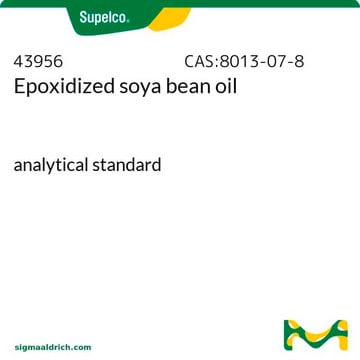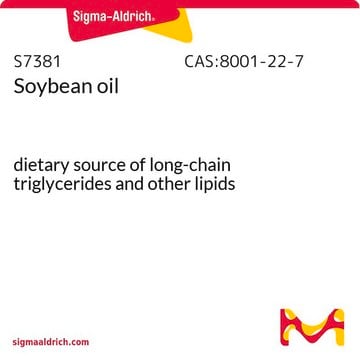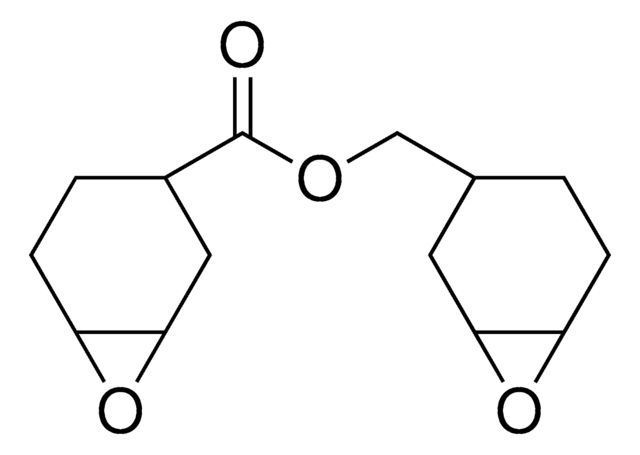Soybean oil, epoxidized acrylate, is fully converted to the acrylate form with 1-2 acrylates per molecule. A structure is not available for this product. There are three epoxy groups on the molecule, and they react with the acrylate to form an epoxidized soybean oil acrylate.
412333
Soybean oil, epoxidized acrylate
Synonym(s):
ESOA
About This Item
Recommended Products
form
viscous liquid
Quality Level
refractive index
n20/D 1.484 (lit.)
density
1.04 g/mL at 25 °C (lit.)
Related Categories
General description
Application
- Smart Biomedical Scaffolds: Application in 4D printing of smart biomedical scaffolds using novel soybean oil epoxidized acrylate, demonstrating the material′s adaptability and function in medical implant technologies (Miao, Zhu, Castro, Nowicki, Zhou, Cui, 2016).
- UV-Curable Phosphorous-Containing Resins: Synthesis of UV-curable phosphorous-containing acrylated epoxidized soybean oil-based resins aimed at enhancing fire resistance and durability of the resulting polymers (Hu, Jia, Shang, Zhang, Feng, Liu, 2019).
- Slow-Release Fertilizer: Development of slow-release fertilizers by coating urea with acrylate epoxidized soybean oil, aiming to improve nutrient use efficiency and reduce environmental impact (Jiang, Duan, Ma, Song, Xie, Liu, 2024).
- High-Performance Epoxy Resins: Creation of high-performance, bio-based epoxy acrylate resins from soybean oil for use in UV-curable coatings, offering a sustainable alternative to conventional petrochemical-derived resins (Wu, Hu, Tang, Zhang, Wang, 2018).
Signal Word
Warning
Hazard Statements
Precautionary Statements
Hazard Classifications
Skin Sens. 1
Storage Class Code
10 - Combustible liquids
WGK
WGK 3
Flash Point(F)
235.4 °F - closed cup
Flash Point(C)
113 °C - closed cup
Personal Protective Equipment
Choose from one of the most recent versions:
Already Own This Product?
Find documentation for the products that you have recently purchased in the Document Library.
Customers Also Viewed
-
Hello, I'm wondering what the functionality of this product is, e.g. how many epoxides/acrylates can I expect per unit volume or mass? Is this something you report or something we need to determine empirically?
1 answer-
Helpful?
-
Active Filters
Our team of scientists has experience in all areas of research including Life Science, Material Science, Chemical Synthesis, Chromatography, Analytical and many others.
Contact Technical Service












